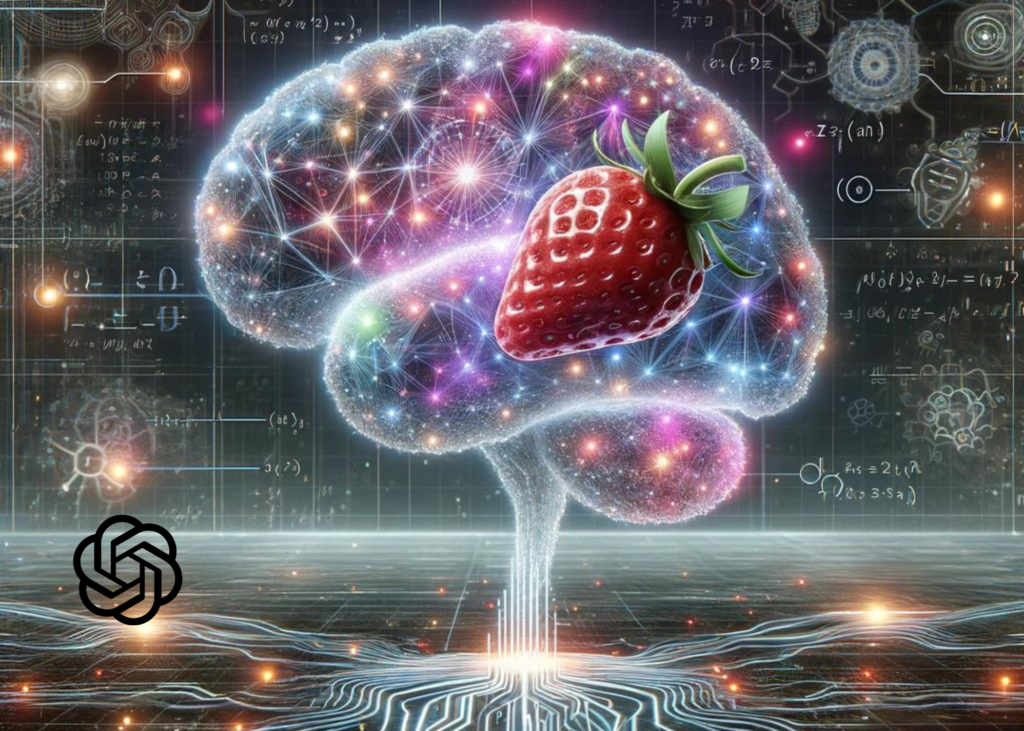The world of artificial intelligence is constantly evolving, and OpenAI is once again leading the charge with its upcoming model, “Strawberry.” Set to debut in the fall, this model is generating excitement and curiosity across the tech landscape. But what exactly is Strawberry, and why is it such a big deal? Let’s dive into its development history, key features, controversies, and potential impact on the future of AI.
The Origins: From “Q-Star” to “Strawberry”
Strawberry wasn’t always known by its sweet-sounding name. Internally, it started as “Q-Star,” a project that played a significant role in some turbulent times at OpenAI. The model’s development was closely linked to concerns about the risks associated with advanced AI, which even led to the brief ousting of OpenAI’s CEO, Sam Altman, before he quickly returned. The controversy stemmed from fears that Strawberry, or Q-Star as it was known then, might represent a major step towards artificial general intelligence (AGI) — AI that can understand, learn, and apply knowledge across a wide range of tasks, much like a human.
Read more: Arizona State University Partners with OpenAI to Revolutionize Education with ChatGPT
While AGI is a fascinating concept, it’s also a bit like playing with fire. The potential for AI systems to evolve beyond human control raises serious ethical and safety concerns. Think of it as the “Skynet” scenario from the Terminator movies, where machines become too smart for their own good. But fear not; OpenAI is very much aware of these risks and is taking steps to ensure that Strawberry, while powerful, remains aligned with human values.
What Makes Strawberry Special?
At its core, Strawberry is designed to be a game-changer in the world of AI reasoning. Reasoning in AI is like teaching a machine to not just perform tasks, but to understand the steps needed to achieve complex goals. Imagine trying to solve a multi-step math problem or planning a marketing strategy from scratch — that’s the kind of challenge Strawberry is built to tackle.
One of the most impressive demonstrations of Strawberry’s capabilities was its ability to solve the New York Times word puzzle “Connections.” This might sound simple, but it’s a testament to the model’s advanced problem-solving skills. It’s also expected to achieve over 90% on the MATH benchmark, which consists of championship-level math problems. For context, GPT-4 scored 53%, and its improved sibling, GPT-4o, hit 76.6%. If Strawberry lives up to expectations, it could put OpenAI far ahead of its competitors.
But Strawberry isn’t just about crunching numbers. It also promises to handle long-horizon tasks, which require planning and executing actions over an extended period. This could be anything from conducting research autonomously to assisting in software development. Essentially, Strawberry aims to be more than just an AI tool; it could act as a partner in creative and intellectual pursuits.
Read more: OpenAI Launches Fine-Tuning for GPT-4o, Empowering Developers to Customize AI Models
The Controversy: Is Strawberry Too Smart?
With great power comes great responsibility, and that’s where the controversy around Strawberry comes into play. The internal debates at OpenAI, which even led to the temporary departure of its CEO, highlight the tension between pushing the boundaries of AI and ensuring safety. The fear is that models like Strawberry could edge closer to AGI, raising the stakes in terms of control and alignment with human goals.
OpenAI’s development of Strawberry has been compared to a method known as “Self-Taught Reasoner” (STaR), which allows AI models to essentially teach themselves by creating their own training data. This self-improvement loop could, in theory, lead to intelligence that surpasses human capabilities. While this is an exciting prospect, it’s also a bit daunting, and it’s no surprise that some researchers are sounding the alarm.
The Impact: What Does Strawberry Mean for AI’s Future?
If Strawberry delivers on its promises, it could reshape the AI landscape in profound ways. By advancing reasoning capabilities, OpenAI could open doors to new applications that were previously out of reach. From scientific discoveries to innovative software solutions, the potential is vast.
However, with this power comes the need for careful oversight. The conversations around Strawberry underscore the importance of ethical considerations in AI development. As AI models become more capable, ensuring they remain aligned with human values will be crucial. OpenAI’s approach with Strawberry could serve as a blueprint for balancing innovation with responsibility in the AI industry.
Conclusion: A Sweet, Yet Cautionary, Step Forward
Strawberry represents both the promise and the peril of advanced AI. On one hand, it’s an exciting leap forward in what AI can achieve, particularly in reasoning and complex problem-solving. On the other hand, it raises important questions about how far we should push the boundaries of AI and what safeguards are necessary to prevent unintended consequences.
As we await its release, the world will be watching to see how Strawberry performs and what it means for the future of AI. One thing is clear: this is just the beginning of a new chapter in the AI story, and it’s going to be a fascinating one to follow.



